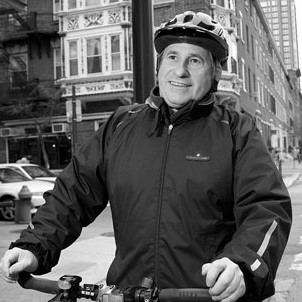General
2020 forecast from shared micromobility experts
21 January, 2020
Horace Dediu – micromobility expert, founder of Bond and Micromobility Industries – Based in the US

Shared micromobility will undergo a few changes this year:
- Consolidation among some of the providers with acquisitions of smaller players such as that of Scoot taking place.
- Focus on discovery. As Google maps is currently surfacing Lime, expect deals for other providers or at least negotiations to take place. The map is the browser of mobility and as such placement on the map is equivalent of search.
- Segmentation may finally begin where price and vehicle choices will be offered for various customer segments. This might still take longer but maybe by end of the year we’ll see movement in this direction.
Antonia Roberts – deputy chief executive at CoMoUK – Based in the UK

CoMoUK foresees that 2020 will be a really positive year for shared micro-mobility with further innovation and expansion. There are many new cities developing schemes and we are regularly contacted by companies with ideas to enhance the customer experience and meet the needs of new audiences.
We shall soon discover if e-scooters will make an official appearance on the streets of the UK, it seems likely that trials may be authorised. Given the bike share sector is moving firmly towards hub based management this may well set the tone for other modes to avoid free-floating scenarios. It is unlikely that the deployment of hubs and lock to /tethering will be enough to address the issues of criminal damage alone without new initiatives to nip the action of a minority in bud.
It is important that the benefits set out in the latest CoMoUK bike share users survey are enjoyed by as many as possible. We know shared micromobility has the power to cut congestion and improve air quality whilst improving physical and mental health. These are solutions we can’t afford to ignore.
Philip Douglas – micromobility fleet management expert, founder of Swissfleet – Based in Switzerland

In 2020 the race to find the ultimate vehicle that allows operators to turn a profit will be ongoing and we should see some exciting new products. The success of players like Revel or Emmy won’t go unnoticed. The advantages of larger power on-demand vehicles will most likely lead to more diverse offerings by bigger platform players. Sitdown scooters will certainly become a thing. It also remains to be seen if the idea of speed Pedelecs that can go at 45km/h catches on and can win over pure power on demand mopeds. From a political standpoint, there should certainly be a preference to promote active mobility and offer incentives to these modes of transport.
Whatever the vehicle, the total cost of ownership is King and sharing vehicles are evolving into an own class of more reliable vehicles with several suppliers investing heavily in this field. Predictive maintenance and rebalancing, user incentives and gamification will also lower operations cost.
There is a lack of public charging infrastructure that could be used by a wide variety of micromobility players. Any city that can progress in this field should see a surge in quality operators who are willing to cooperate in exchange for the use of solid infrastructure. The next few years could then see a change from “gig economy juicing” or battery swapping to more sustainable infrastructure-based operations that revolve around densely placed shared mobility hubs.
I also expect vehicles that allow users to carry more luggage to surface. While multitrack cargo bikes will be an exception, two-wheeled vehicles with a smaller footprint but with sturdy luggage options could prevail and become a feature that users will be looking for.
MAAS Apps like Jelbi in Berlin will become available in more and more cities, while all the big platform players will integrate more and more micromobility options into their routing. This should boost usage further.
And last but not least, let’s hope that public – and VC – money will be invested more sustainably and we will find ourselves in a matured shared mobility landscape where risk and opportunities are fairly distributed and all efforts actually lead to people moving more efficiently in our cities.
Russell Meddin – Bike-share expert and curator of bikesharingmap.com – Based in the USA

In the Public Use Bicycle segment of «micromobility» for the coming year, there will be many more pedelecs in public use. Current legacy programs will go into high gear adding pedelecs to their fleets. New deployments will be either full pedelec or partial pedelec programs. There will be a reversal of the trend of bicycle companies adding stand-up electric scooters to compliment the bikes to where stand-up electric scooter companies will add pedelecs.
Over the coming year, there will be more e-cargo bikes available in public use. As well as many more e-cargo bikes being used in the freight/delivery sector. Cargo bike spin-offs might be applied to personal public use as safer 3 wheel pedelecs which will be used for adding children or an adult passenger or two to the ride.
Cities will encourage the use of bicycles/ tricycles for commuting and connecting to other forms of public transit and also become stricter in overseeing «micromobility». Cities will designate more and more space to «micromobility» at the expense of personal automobiles. By 2021 many cities will start to see a noticeable shift in personal transit away from 4 wheels to smaller configurations electrified!. We all will then breathe easier.
Stéphane Schultz – Mobility expert, founder of 15marches – Based in France

The French local elections will confirm the return to favour of the bicycle in the public policy, with ambitious separated infrastructure programs. The e-bike sales will carry on growing, as the e-scooter ones to a lesser extent. This will paradoxically leads councillors to a complex situation: many new and unexperienced users + not enough protected infrastructure = a growing number of accidents, with media coverage.
On the services side, the Paris’ e-scooter sharing RFP will be the main event for operators, in a blurry context around its proceedings and results. As in the French capital, Lyon will launch its RFP/tender only on the municipal area. Other cities might follow suit after the LOM (Loi d’orientation des Mobilités) enactment, but it is not sure that it will attract many competitors: the investors’ strategical changes should limit development capacities of operators, which will certainly be more selective.
Anyway, micromobility will enter in its age of reason: business model changes, and time for long term decisions. Let’s hope it will allow a real integration of those services into public transport networks.